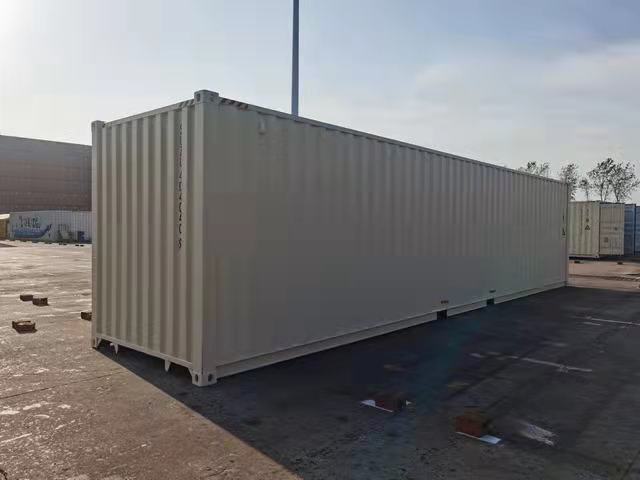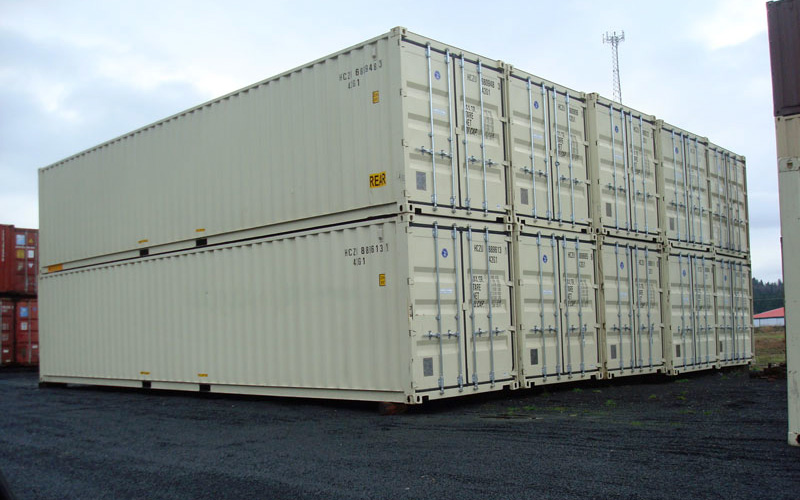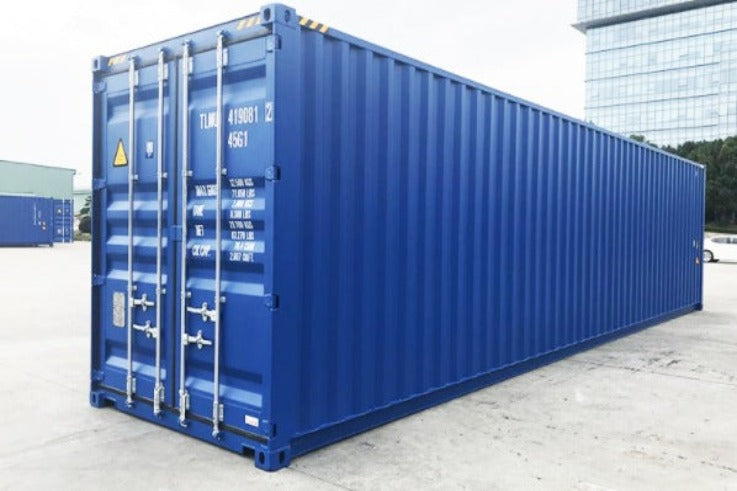6 Must-Know Tips When You Shop New Shipping Container 40 x 8 x 9.6 for Urban Projects
The Ultimate Guide to Selecting the Right Delivery Container for Your Needs
When it comes to choosing the appropriate shipping container, recognizing your specific demands is vital. You'll intend to take into account factors like size, kind, and product to guarantee you make the most effective option. From typical sizes to specialized choices, there's a lot to check out. Plus, budgeting for both the container and any type of modifications can make a huge difference. Allow's break down the essential facets to help you find the perfect fit for your demands.
Recognizing Shipping Container Sizes
When you're picking a delivery container, understanding the various sizes offered is essential for making the ideal decision. Shipping containers normally can be found in standard lengths of 20 and 40 feet, yet you'll likewise discover other dimensions. Knowing the dimension you require relies on what you plan to store or transport.If you're moving smaller items, a 20-foot container could be suitable, while bigger deliveries typically need a 40-foot container. The elevation can likewise vary; high cube containers offer added upright area, which can be useful for taller goods.Before determining, gauge your freight, and take into consideration exactly how much area you'll need for loading and unloading. Constantly consider potential future needs-- opting for a slightly bigger container might conserve you headache down the line. Eventually, choosing the right size will boost effectiveness and guarantee your things are protected during transportation
Types of Delivery Containers Available
There are a number of kinds of delivery containers available, each developed for particular purposes and freight needs. The typical dry container is functional, best for general freight. If you're shipping disposable items, take into consideration a refrigerated container, which preserves a controlled temperature level. For extra-large items, high dice containers provide additional height, fitting taller loads.If you require to transfer hefty equipment or devices, level rack containers supply a tough base without walls. Meanwhile, open-top containers enable for very easy loading of high freight, with a removable tarp covering for defense. If you're searching for flexibility, take into consideration a collapsible container that can be conveniently stored when not in use.Lastly, specialized containers like storage tank containers are used for liquids, while vented containers are made for bulk cargo that requires ventilation. Understanding your cargo type will certainly assist you choose the right container to meet your delivery requires efficiently.
Product Factors To Consider for Resilience
When selecting a delivery container, the product plays an important function in its durability. You'll want to weigh the benefits of steel versus aluminum, particularly relating to rust resistance. Recognizing these aspects can aid you make an extra enlightened option for your delivery needs.
Steel vs. Aluminum Containers
How do you choose in between steel and light weight aluminum containers for your delivery needs? Start by considering resilience. Steel containers are robust and deal superb toughness, making them excellent for hefty tons and severe problems. They stand up to damages from effects and are typically more economical, which can be a significant aspect for budget-conscious buyers.On the other hand, light weight aluminum containers are light-weight, which can save you on delivery expenses. They're simpler to maneuver and are a terrific option if you need to move products frequently. Aluminum is usually a lot more expensive and much less robust than steel. Consider your details requirements very carefully, including weight, price, and the kind of cargo you'll be delivery, to make the right choice for your circumstance.
Rust Resistance Variables
Choosing the right material doesn't simply involve weight and cost; deterioration resistance plays a significant function in sturdiness. When selecting a shipping container, take into consideration the environment it'll deal with. Steel containers, while strong, can rust otherwise correctly dealt with. Look for options with protective coverings or galvanization to improve their life-span. Aluminum, on the various other hand, supplies all-natural deterioration resistance, making it optimal for coastal locations or moist conditions. Nevertheless, it can be more pricey. Furthermore, analyze the container's usage-- if it'll be exposed to chemicals or severe weather condition, prioritize materials that can withstand these conditions. Spending in a corrosion-resistant container now can save you from costly repair services or replacements down the line. Pick carefully for long-term advantages.
Modifications and Modification Options
Delivering containers aren't simply for delivering goods; they can be changed to fulfill your details demands through numerous adjustments and personalization options. You can convert a common container right into a comfy office, a short-term retail store, or even an individual gym. The opportunities are almost endless.Think concerning adding windows, insulation, or ventilation to improve comfort. You may likewise think about electric circuitry, pipes, or perhaps customized shelving to boost functionality. If security's an issue, strengthened locks can provide tranquility of mind.For aesthetic allure, you can paint the container or add an unique design to make it stand out. Don't ignore floor covering alternatives-- whether you desire resilient plywood or something a lot more advanced, it can elevate the space.Ultimately, customizing your shipping container to suit your requirements can enhance functionality and create a special environment useful site that mirrors your design.
Analyzing Your Transport Needs
When it concerns utilizing your modified delivery container, understanding your transportation requires is crucial. Start by establishing what you'll be shipping-- whether it's hefty tools, retail goods, or personal products. Each type of freight has various demands relating to dimension, weight, and accessibility.Next, consider the distance and setting of transport. Are you shipping in your area, nationally, or worldwide? This impacts the container's design and performance. If you're using trucks, guarantee your container fits standard measurements for easy loading and unloading.Additionally, consider transit problems. Will your products need special security from weather or temperature variations? If so, you could need insulation or ventilation attributes in your container.Lastly, analyze exactly how typically you'll be transporting items. Constant deliveries might require an extra sturdy and flexible container to satisfy ongoing needs. By addressing these variables, you'll be well-prepared to select the right delivery container for your demands.
Budgeting for Your Shipping Container
Setting a spending plan for your delivery container is important important link for ensuring a smooth buying procedure. Initially, establish just how much you can afford to invest. Keep in mind that rates can vary significantly based upon dimension, condition, and kind. New containers generally set you back extra, however utilized ones can supply significant savings.Next, take into consideration any type of added prices you may incur, such as transportation charges, delivery charges, and modifications. If you prepare to tailor the container, consider those expenses also. Research various providers to contrast costs and discover the finest deal that meets your needs.Don' t forget to consist of any licenses or regulations that might use to your purchase and use the container. By clearly outlining your budget, you'll be much better prepared to make enlightened choices, ensuring you obtain the ideal container without breaking the bank.
Upkeep and Take Care Of Durability
To assure your shipping container lasts for several years, normal maintenance is vital. Beginning by inspecting the outside for corrosion, dents, and damages. If you identify any type of problems, address them right away to avoid more wear and tear. Clean the container occasionally, both throughout, to get rid of dirt, debris, and moisture that can result in corrosion.Ensure the doors secure properly and oil the joints to avoid corrosion and sticking. If you're utilizing the container for storage, take into consideration adding air flow to decrease humidity and mold and mildew development. For extra defense, use a rust-inhibiting paint or sealer annually.If your container's located in a rough environment, like coastal locations, you might require to raise upkeep regularity. Watch on the flooring, also; any kind of signs of wear ought to be repaired immediately. With these basic actions, you'll expand the life of your delivery container significantly.
Regularly Asked Inquiries
Exactly how Do I Find a Dependable Shipping Container Vendor?
To find a trustworthy shipping container vendor, start by looking into online testimonials, asking for referrals from close friends or market calls, and comparing prices. Constantly examine their qualifications and assurance they offer quality containers click this that meet your demands.

Can I Lease a Shipping Container As Opposed To Acquiring?
Yes, you can most definitely rent a shipping container instead of acquiring one. Lots of suppliers offer rental choices, which can conserve you cash and give adaptability if you just require it for a short period.
What Allows Are Needed for Container Positioning?

Are Shipping Containers Weatherproof and Suitable for Outdoor Storage?
Yes, delivering containers are generally weatherproof, created to endure rough conditions. Their durable building and construction keeps your items safe and secure and dry, making them appropriate for outside storage space. Simply ensure appropriate air flow to avoid dampness build-up inside.
Exactly how Do I Deliver a Shipping Container Once Purchased?
